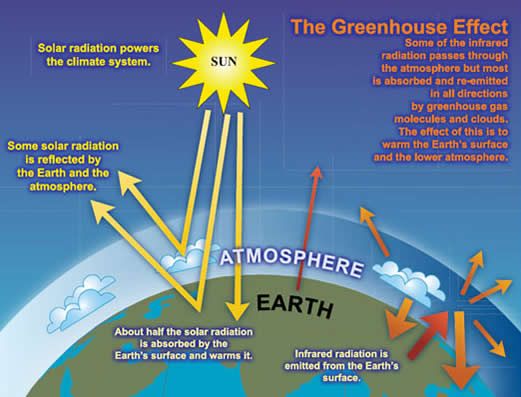There are two meanings of the term "greenhouse effect". There is a "natural" greenhouse effect that keeps the Earth's  climate warm and habitable. There is also the "man-made" greenhouse effect, which is the enhancement of Earth's natural greenhouse effect by the addition of greenhouse gases from the burning of fossil fuels (mainly petroleum, coal, and natural gas). In order to understand how the greenhouse effect operates, we need to first understand "infrared radiation". Greenhouse gases trap some of the infrared radiation that escapes from the Earth, making the Earth warmer that it would otherwise be. You can think of greenhouse gases as sort of a "blanket" for infrared radiation-- it keeps the lower layers of the atmosphere warmer, and the upper layers colder, than if the greenhouse gases were not there. climate warm and habitable. There is also the "man-made" greenhouse effect, which is the enhancement of Earth's natural greenhouse effect by the addition of greenhouse gases from the burning of fossil fuels (mainly petroleum, coal, and natural gas). In order to understand how the greenhouse effect operates, we need to first understand "infrared radiation". Greenhouse gases trap some of the infrared radiation that escapes from the Earth, making the Earth warmer that it would otherwise be. You can think of greenhouse gases as sort of a "blanket" for infrared radiation-- it keeps the lower layers of the atmosphere warmer, and the upper layers colder, than if the greenhouse gases were not there. About 80-90% of the Earth's natural greenhouse effect is due to water vapor, a strong greenhouse gas. The remainder is due to carbon dioxide, methane, and a few other minor gases. It is the carbon dioxide concentration that is increasing, due to the burning of fossil fuels (as well as from some rainforest burning). This is the man-made portion of the greenhouse effect, and it is believed by many scientists to be responsible for the global warming of the last 150 years. Also, the concentration of methane, although small, has also increased in recent decades. The reasons for this increase, though, are uncertain. |